Belgian Ghent has a past as one of Europe’s largest cities. It was once the center of Europe’s wool and textile trade, and there was a strong urbanization and industrialization early on. Together with the success of the merchants, it created tremendous wealth, which resulted in, for example, many of the beautiful buildings visitors can see in the city center today.
Cathedrals, churches, monasteries, squares, merchant residences and museums are located in large numbers between the canals in the old town which have retained its medieval character. The large buildings stands next to each other, and the city center is laid out nicely as a continuous open urban space.
One of the finest atmospheres in the city, you will find in the streets of Graslei and Korenlei, which are located along Ghent’s canals. They are the epitome of Flemish canal atmosphere with gabled houses, towers and of course the water. In the two streets there is always a vibrant street life.
The water also makes Ghent an obvious destination for a canal tour, where you see the beautiful city from new perspectives. Graslei and Korenlei are among the places to start sailing, and one of the highlights of the trip is the beautifully preserved castle; Het Gravensteen.
Ghent is also located in the heart of Belgium, and it is a good starting point for visiting other Flemish cultural and merchant cities such as Antwerp, Bruges and Brussels. They are all located a short distance from Ghent and are all full of sights to enjoy.
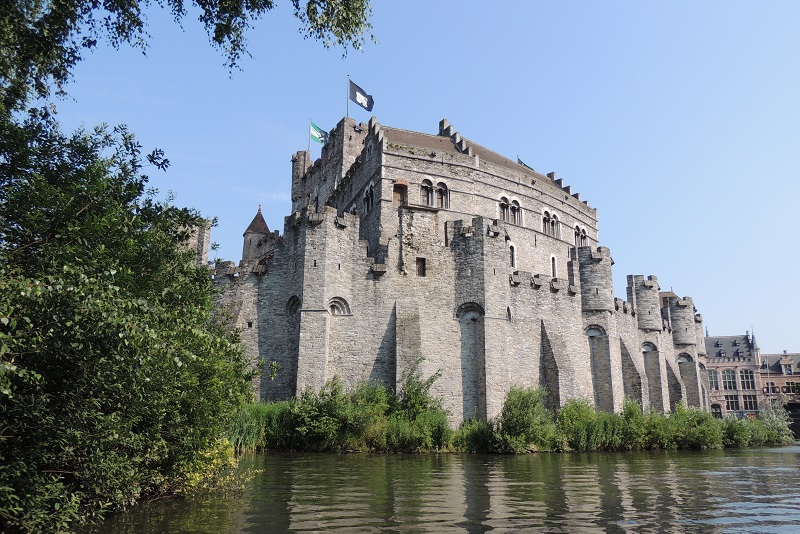
Het Gravensteen is Ghent’s old castle, which was built around the year 1180 by Philip of Alsace, Count of Flanders. The inspiration came from the Crusader castles that Philip experienced during a Crusades to the Holy Land.
This is Ghent’s cathedral with Jan van Eick’s famous altarpiece, Het Lam Gods, from 1430-1432. The cathedral was originally built in the 9th century, but already less than 100 years later it was expanded.
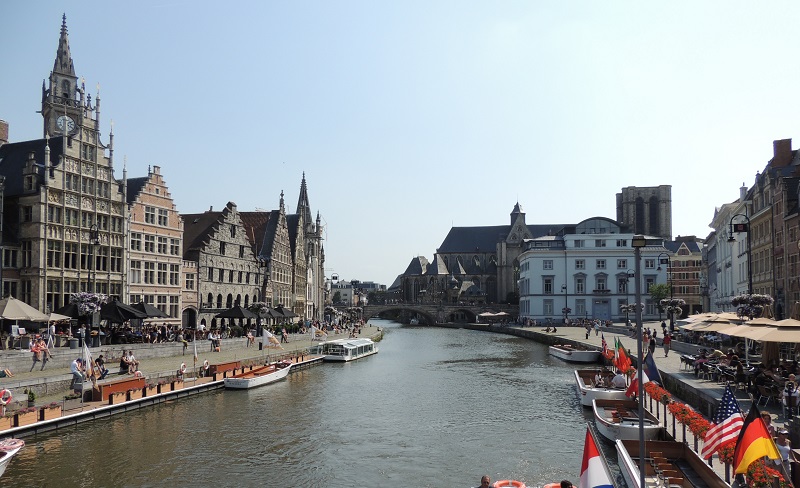
Graslei and Korenlei are the names of two streets along Ghent’s canals. The atmosphere here is the epitome of Flemish canals with thanked gabled houses, towers and of course the water where you can board a canal cruise.
Het Belfort is Ghent’s 91 meter/298 ft high bell tower, built from 1313 as a symbol of the city’s independence. On the lower floor of the tower, the documents for Ghent’s market town rights were stored for centuries.
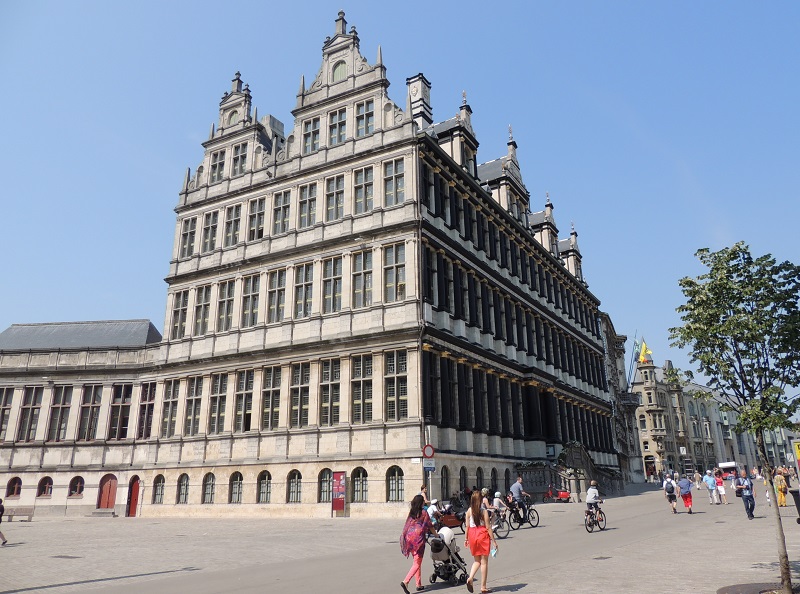
Ghent’s town hall, Staadhuis, is one of the city’s many landmark buildings. The building consists of two wings, which were built in late Gothic in the years 1519-1539 and in Renaissance from 1595 to 1618.
The present St-Niklaaskerk was built from the early 1200s on the site, where for a couple of centuries two other church buildings were located. The church is the best example in Belgium of the Schelde Gothic.

The local name of Groot Vleeshuis means the Great Meat House, and this was the city’s only meat market from its construction in the years 1407-1419 to the end of the 19th century. Today, there is a mixed market in the old settings.
Lieve is the name of a canal that was dug in 1251-1269 as a link between Ghent and the sea at Zwin near Bruges. It was the first artificial link to the North Sea from the city.
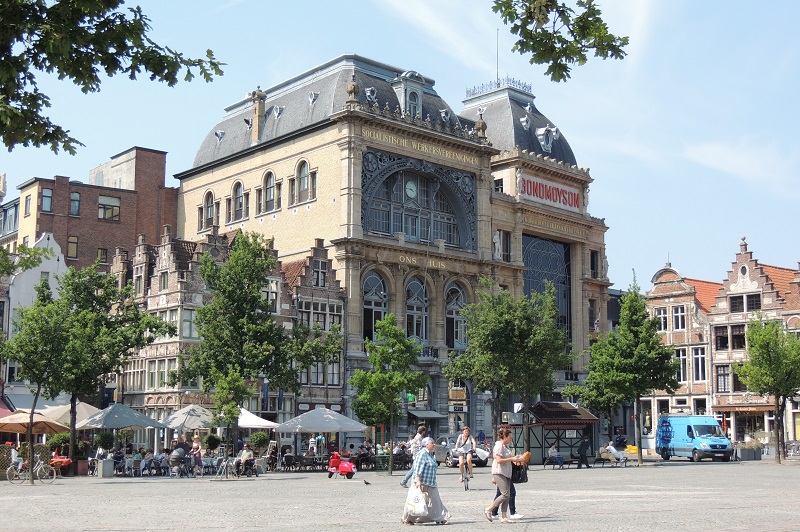
Vrijdagmarkt is one of Ghent’s most beautiful squares. It is surrounded by gabled houses and other buildings, each of which together give a beautiful whole together with beautiful trees.
At the city museum you can explore the city’s rich history and development through time. This is done through a fine exhibition of archaeological finds, maps and many other items.
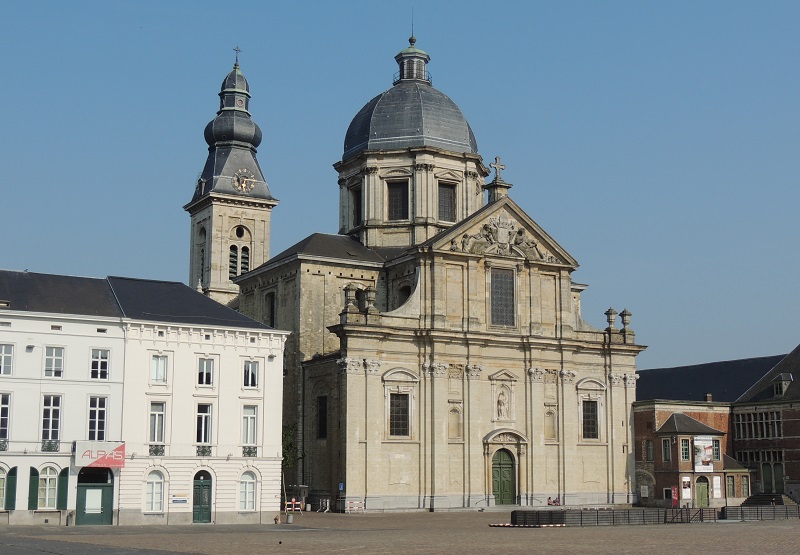
This church is located at the highest point in Ghent, at 28 meter/91 feet above sea level. The church replaced a former Romanesque church, and it was inspired in style by Rome’s many large churches.
This is Ghent’s leading art museum, where you can see a fine collection of art from the 1300-1900s. The central part of the collection is visual art from the southern part of the Netherlands.
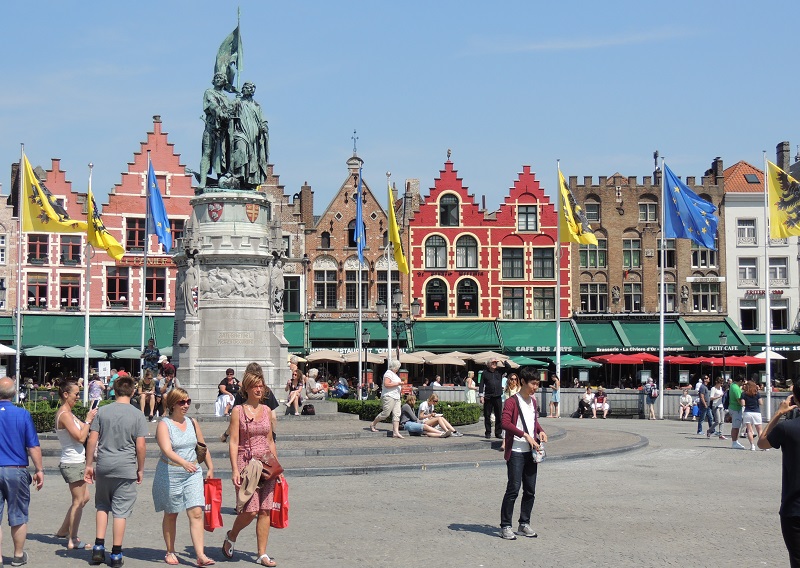
Bruges’ rich merchant and maritime history has created a tourist gem in western Flanders. The city’s central squares are Markt and Burg, and in the city center you can see architecture from many centuries. The best known is the Het Belfort tower.
This is Belgium’s capital with countless major sights. The city center is the Grote Markt/Grand Place, considered one of the most beautiful squares in the world of its time. And Manneken Pis pees just a few minutes walk from here.
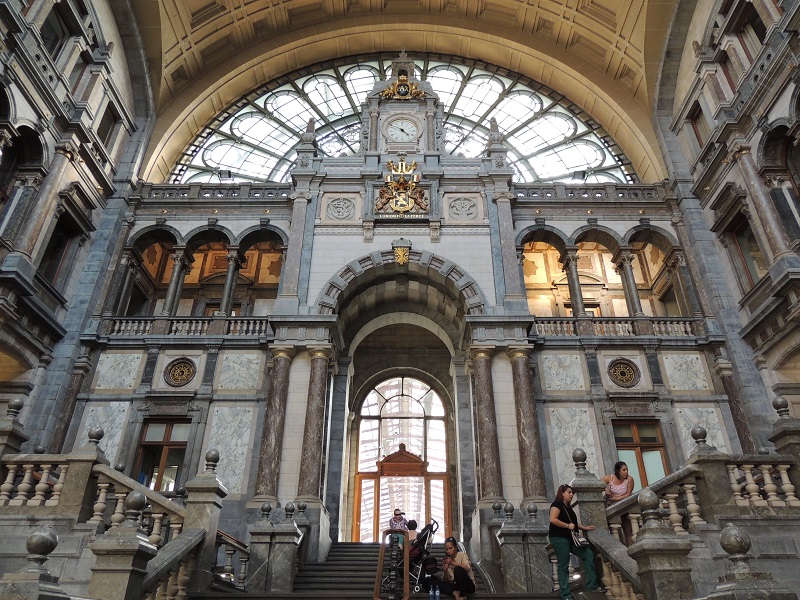
The history of the city of Antwerp goes back to the 100-200s in the Gallic-Roman era. Today, Antwerp is a Flemish trade and port city with countless sights. Het Steen castle and many beautiful churches are some of the great sights.
Woodrow Wilsonplein 4
gentzuid.be
Veldstraat 86
inno.be
Veldstraat, Nederkouter, St.-Niklaasstraat, Voldersstraat, Zonnestraat, Brabantdam, Bennesteeg, Magaleinstraat, Burgstraat
Blaameersen Park, Zuiderlaan 5, www.gent.be/blaarmeersen
De Wereld van Kina
Sint Pietersplein 14
dewereldvankina.be
Settlements in the area where the Leie and Schelde rivers flow together have been inhabited both in the Stone Age and the Iron Age. Some historians also believe that later Ghent got its name from the Celtic word Ganda, which just means confluence.
Archaeological finds have shown that there has also been activity here throughout Roman times, and it was reinforced when the Franks invaded Roman land from the late 300s. With that, old Dutch language and culture were introduced instead of Latin and Celtic.
The history of the city of Ghent dates back to the mid-600s, when St. Amand founded two monasteries on the site; dedicated to St. Peter and St. Bavo respectively. It started the early development of the city, which took place both around the monasteries and in a place where the city’s trade was concentrated.
The city expanded relatively quickly and became a target for the Vikings looting in the 800s. Thus, in 851 and again in 879, the city was attacked by the Scandinavian Vikings, which naturally put a damper on the city’s growth.
In the 1000s Ghent flourished again, and by that time the city grew enormously in the following hundred years, with Flanders being one of Europe’s most urbanized areas.
More than 60,000 people lived within the city walls, and in Europe only Paris was larger. In Ghent, several mighty buildings were erected such as St. Bavo’s Cathedral, St. Nicholas Church and the city’s bell tower.
A significant part of the good economy through the Middle Ages was due to the city’s status as a center for textiles, which for centuries approached several cities in the region. The area around Ghent was particularly good for sheep farming and it provided both production and trade in woolen goods. At one point, the industry was even so developed that wool had to be imported from England to utilize the capacity of the factories.
By the end of the 1300s, Ghent became part of the united Burgundy and Flanders, and slowly but surely the economic dominance of Ghent and Bruges shifted to the cities of Antwerp and Brussels. Ghent maintained some economic strength, but through the 1400s the city’s former strength was also socially and culturally reduced significantly compared to the new centers.
Ghent came under the Spanish rule of the area, and dissatisfaction with that resulted in the Revolt in Ghent in 1539. The revolt was due not least to high taxes going to the Spanish central power. Ghent was conquered, and Spanish king Karl V, born in Ghent, came to the city personally to celebrate the victory by, among other things, letting Ghent’s aristocracy go before him with bare feet and a loop around his neck.
The four-year war broke out in 1568 as the Dutch rebellion against Spanish rule. A transition from 1577 to 1584, Ghent served as a city-state where peace was made between Protestants and Catholics.
The war continued and lasted until 1648, and the end became a division of the Netherlands into a northern Dutch republic and the Spanish Netherlands, under which Ghent belonged. With the split, Ghent’s role in international trade was largely played out, with the city losing its vital access to the sea. A canal to Bruges from 1623 did not compensate for the former primary sea route.
In 1714 Ghent and the Spanish Netherlands had migrated to Austria as a result of the Spanish War of Succession. That status lasted until the peace in Campo Formio, signed October 18, 1797. With the peace agreement, the present Belgium became French.
Political shifts, however, did not affect Ghent’s economic development, which after a few centuries of scattered religious conflicts and some growth really started the textile industry again in the 18th and 19th centuries.
By the end of the 18th century, economic growth was so great that the city attracted many new citizens and industries. Thus, a transition was Ghent the largest city in present-day Belgium.
In 1794, French troops under Napoleon conquered Flanders and thus also Ghent, which during the Napoleonic period attracted more citizens and grew both economically and in population.
On December 28, 1814, the Ghent Treaty was signed in the city. The treaty entered into world history as the agreement that formally ended the war between Britain and the United States.
The following year, the Napoleonic Wars ended and for Ghent it meant that the city became part of the United Netherlands, which was a state formation until the establishment of Belgium in 1830.
The first half of the 19th century was a time of great development in Ghent. The city’s university was founded in 1814, and in the years 1825-1827 new canals were dug between Ghent and Terneuzen by the river Schelde; thereby giving Gent’s textile industry easier access to new markets. 1827 was also the year in which the city erected a gas plant that provided energy for about 700 modern gas lamps in the streets.
The so-called Belgian Revolution in 1830 led to the country of Belgium, which, unlike the Dutch Netherlands, was characterized by a high degree of industrialization, and Ghent was one of the absolute leading cities. At that time the population was around 83,000.
Around 1860, Ghent’s city walls and ramparts were demolished, giving new development as the industry expanded. It created increasing population with many new residential neighborhoods outside the former city center. Thus, the number of urban children reached over 160,000 by the end of the 19th century.
In 1913, a world exhibition was held in Ghent, which for a time became one of the world’s centers. 130 hectares of land gave way to a number of new buildings in the exhibition area and in Ghent itself. Here, the main railway station Gent-Sint-Peters was completed in 1912 as the city’s new gateway for the many travelers.
During both world wars, Ghent was occupied by German troops. Both times, the city escaped through the actions without colossal destruction; During the Second World War, the occupation lasted until September 6, 1944. The Ghent Middle Ages and the many later centuries’ distinguished buildings remained, and they were later continually renovated in favor of tourism.
Today Ghent is a city that welcomes many tourists to its typical Flemish city center with a wonderful atmosphere, where a large part is car-free and therefore a bit more authentic than the other beautiful and historic Flemish cities.
Overview of Ghent
Belgian Ghent has a past as one of Europe’s largest cities. It was once the center of Europe’s wool and textile trade, and there was a strong urbanization and industrialization early on. Together with the success of the merchants, it created tremendous wealth, which resulted in, for example, many of the beautiful buildings visitors can see in the city center today.
Cathedrals, churches, monasteries, squares, merchant residences and museums are located in large numbers between the canals in the old town which have retained its medieval character. The large buildings stands next to each other, and the city center is laid out nicely as a continuous open urban space.
About the upcoming Ghent travel guide
About the travel guide
The Ghent travel guide gives you an overview of the sights and activities of the Belgian city. Read about top sights and other sights, and get a tour guide with tour suggestions and detailed descriptions of all the city’s most important churches, monuments, mansions, museums, etc.
Ghent is waiting for you, and at vamados.com you can also find cheap flights and great deals on hotels for your trip. You just select your travel dates and then you get flight and accommodation suggestions in and around the city.
Read more about Ghent and Belgium
Buy the travel guide
Click the “Add to Cart” button to purchase the travel guide. After that you will come to the payment, where you enter the purchase and payment information. Upon payment of the travel guide, you will immediately receive a receipt with a link to download your purchase. You can download the travel guide immediately or use the download link in the email later.
Use the travel guide
When you buy the travel guide to Ghent you get the book online so you can have it on your phone, tablet or computer – and of course you can choose to print it. Use the maps and tour suggestions and you will have a good and content-rich journey.
Het Gravensteen • Graslei & Korenlei • Clock Tower • Canal Tours
Overview of Ghent
Belgian Ghent has a past as one of Europe’s largest cities. It was once the center of Europe’s wool and textile trade, and there was a strong urbanization and industrialization early on. Together with the success of the merchants, it created tremendous wealth, which resulted in, for example, many of the beautiful buildings visitors can see in the city center today.
Cathedrals, churches, monasteries, squares, merchant residences and museums are located in large numbers between the canals in the old town which have retained its medieval character. The large buildings stands next to each other, and the city center is laid out nicely as a continuous open urban space.
About the upcoming Ghent travel guide
About the travel guide
The Ghent travel guide gives you an overview of the sights and activities of the Belgian city. Read about top sights and other sights, and get a tour guide with tour suggestions and detailed descriptions of all the city’s most important churches, monuments, mansions, museums, etc.
Ghent is waiting for you, and at vamados.com you can also find cheap flights and great deals on hotels for your trip. You just select your travel dates and then you get flight and accommodation suggestions in and around the city.
Read more about Ghent and Belgium
Buy the travel guide
Click the “Add to Cart” button to purchase the travel guide. After that you will come to the payment, where you enter the purchase and payment information. Upon payment of the travel guide, you will immediately receive a receipt with a link to download your purchase. You can download the travel guide immediately or use the download link in the email later.
Use the travel guide
When you buy the travel guide to Ghent you get the book online so you can have it on your phone, tablet or computer – and of course you can choose to print it. Use the maps and tour suggestions and you will have a good and content-rich journey.

Ghent’s town hall, Staadhuis, is one of the city’s many landmark buildings. The building consists of two wings, which were built in late Gothic in the years 1519-1539 and in Renaissance from 1595 to 1618.
The present St-Niklaaskerk was built from the early 1200s on the site, where for a couple of centuries two other church buildings were located. The church is the best example in Belgium of the Schelde Gothic.

The local name of Groot Vleeshuis means the Great Meat House, and this was the city’s only meat market from its construction in the years 1407-1419 to the end of the 19th century. Today, there is a mixed market in the old settings.
Lieve is the name of a canal that was dug in 1251-1269 as a link between Ghent and the sea at Zwin near Bruges. It was the first artificial link to the North Sea from the city.

Vrijdagmarkt is one of Ghent’s most beautiful squares. It is surrounded by gabled houses and other buildings, each of which together give a beautiful whole together with beautiful trees.
At the city museum you can explore the city’s rich history and development through time. This is done through a fine exhibition of archaeological finds, maps and many other items.

This church is located at the highest point in Ghent, at 28 meter/91 feet above sea level. The church replaced a former Romanesque church, and it was inspired in style by Rome’s many large churches.
This is Ghent’s leading art museum, where you can see a fine collection of art from the 1300-1900s. The central part of the collection is visual art from the southern part of the Netherlands.
Similar to Ghent Travel Guide